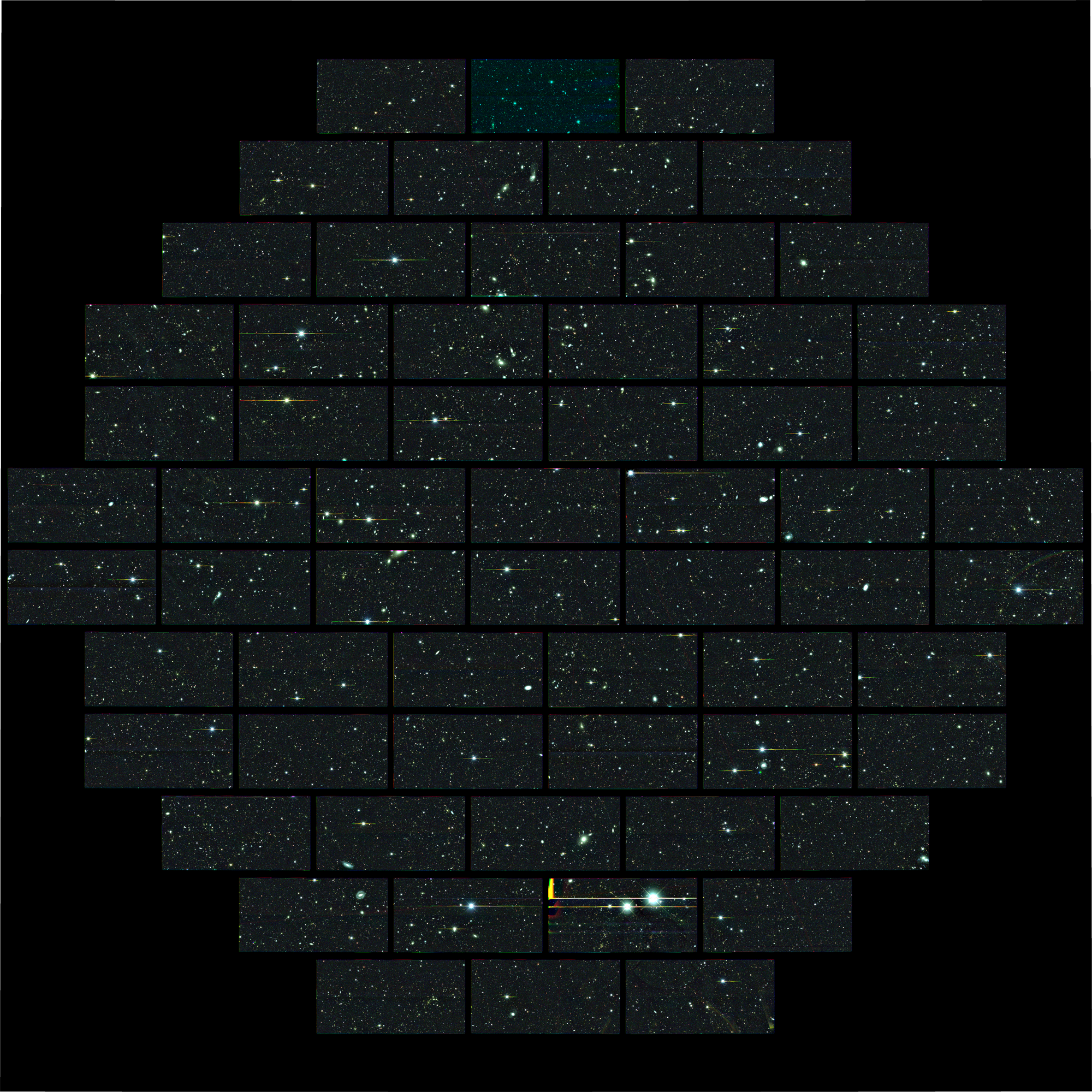It might well make up much of our universe and now the largest single high definition map of mysterious dark matter has been produced, with the help of UK scientists. And it could reveal more about how galaxies formed in our Universe.
Researchers at the Dark Energy Survey (DES), including several from the University of Manchester, have released the first in a series of dark matter maps of the cosmos. The map, created with one of the world’s most powerful digital cameras, is the largest contiguous map created at this level of detail, and will improve our understanding of dark matter’s role in the formation of galaxies.
The map was released today at the April meeting of the American Physical Society in Baltimore, Maryland. It was created using data captured by the Dark Energy Camera, a 570-megapixel imaging device that is the primary instrument for the Dark Energy Survey (DES) led by Fermilab in the US.
A team from the University of Manchester, led by Professor Sarah Bridle, has spent the last 2 years measuring the shapes of galaxies used to construct the map.
“It is amazing to see a map of the dark matter over such a large region of the sky”, said Prof Bridle “and the full Dark Energy Survey mass map will be more than 30 times bigger still!”
“Analysis of the clumpiness of the dark matter in the maps will also allow us to probe the nature of the mysterious dark energy, believed to be causing the expansion of the universe to speed up.”
The team at Manchester analysed about 130 million separate telescope images of these galaxies. The process of measuring the galaxies is so complex and time consuming that some of the world’s largest supercomputers are needed to do it – each time a new catalog is made it takes about as much computing power as running 500 ordinary desktop computers for two weeks.
“We have to measure the shape of each galaxy – how distorted it is – with extremely high precision, about 1 part in 1000”, said Dr Joe Zuntz, also of the University of Manchester, who has been making the measurements.
Dark matter, the mysterious substance that makes up 85% of all matter in the Universe, is invisible to even the most sensitive astronomical instruments because it does not emit or block light. But its effects can be seen using a technique called gravitational lensing – studying the distortion that occurs when the gravitational pull of dark matter bends light around distant galaxies. Understanding how the clumpiness of dark matter changes with time will reveal the nature of the enigmatic dark energy, which is the ultimate goal of the survey.
The dark matter map released today makes use of early DES observations and cover only about three percent of the area of sky DES will document over its five-year mission. The survey has just completed its second year. As scientists expand their search, they’ll be able to better test current cosmological theories by comparing the amounts of dark and visible matter.
Those theories suggest that, since there is much more dark matter in the universe than visible matter, galaxies will form where there are large concentrations of dark matter (and hence stronger gravity) present. So far, the DES analysis backs this up: the maps show large filaments of matter along which visible galaxies and galaxy clusters lie and cosmic voids where very few galaxies reside. Follow-up studies of some of the enormous filaments and voids, and the enormous volume of data, collected throughout the survey will reveal more about this interplay of mass and light.







